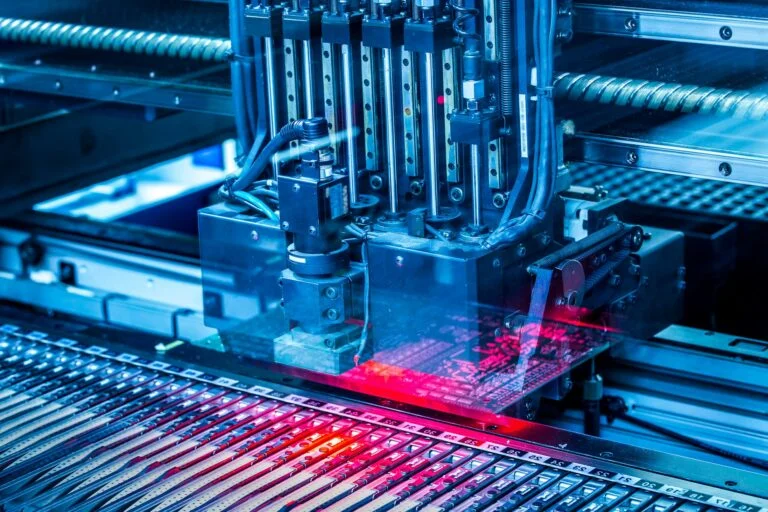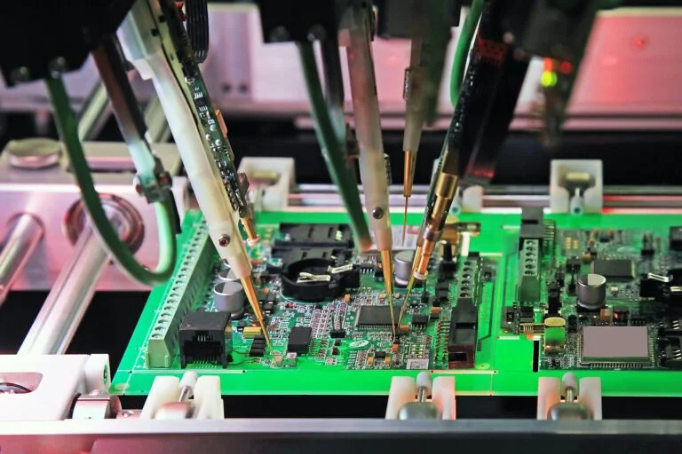PCB assembly is a vital process in electronics production that ensures electronic components are properly placed and soldered onto PCBs to form working devices. Technological advancements over the decades have transformed PCB assembly factories to enhance efficiency, accuracy, and scalability. From automated pick-and-place machines to AI-based quality control, technology has become an indispensable component in contemporary PCB manufacturing.
In this blog, we are going to discuss how state-of-the-art technologies are revolutionizing PCB assembly factories, boosting production capabilities, minimizing errors, and facilitating quicker turnaround time.

1. PCB Assembly Automation
Automation has emerged as the backbone of PCB assembly, cutting down human intervention greatly and boosting speed as well as accuracy. Some of the most important automated technologies are:
A. Pick-and-Place Machines
High-speed robotic systems are used to place surface-mount components (SMDs) on PCBs precisely.
Able to put thousands of parts per hour with micron-level accuracy.
Eliminates human error and boosts production rates.
B. Automated Soldering Systems
Reflow soldering : melts solder paste using controlled heat to create robust electrical bonds.
Wave soldering: Mainly for through-hole components, where PCBs travel over a wave of molten solder.
Guarantees repeatable solder quality and reduces defects such as cold joints or bridging.
C. Conveyor Systems & Automated Handling
Smoothly transports PCBs through various assembly phases (placement, soldering, inspection).
Reduces handling time and avoids physical damage to sensitive boards.
2. Sophisticated Inspection & Quality Control Technologies
Quality control plays a very important role in PCB assembly to detect faults early on and guarantee reliability. Contemporary factories take advantage of:
A. Automated Optical Inspection (AOI)
Utilizes high-resolution cameras to inspect PCBs for flaws like misplaced components, solder bridges, or omitted parts.
Comprises images with design specifications to discover inconsistencies.
Decreases human inspection time and increases defect detection rates.
B. X-Ray Inspection (AXI)
It is critical to examine concealed solder joints in Ball Grid Arrays (BGAs) and intricate multi-layer PCBs.
Identifies voids, cracks, or under-soldering that AOI may overlook.
C. In-Circuit Testing (ICT) & Functional Testing
ICT: Inspects electrical connections and validates component values.
Functional Testing: Guarantees the assembled PCB works as expected in real-world applications.
3. Artificial Intelligence (AI) & Machine Learning (ML) in PCB Assembly
AI and ML are revolutionizing PCB production by streamlining processes and forecasting failures:
A. Predictive Maintenance
Machine data is processed by AI to forecast equipment failures before they happen.
Decreases downtime, and increases the life of assembly machines.
B. Defect Detection & Process Optimization
Past defects are learned by ML algorithms to enhance inspection accuracy.
Tune assembly parameters in real time to reduce errors.

C. Smart Manufacturing & Industry 4.0 Integration
Production lines are monitored remotely by factories using IoT-enabled devices.
Data-driven insights enable the streamlining of workflows and the elimination of waste.
4. 3D Printing & Rapid Prototyping
3D printing technology finds more applications in PCB assembly for:
A. Prototyping & Custom Enclosures
Facilitates rapid manufacturing of PCB enclosures and jigs for testing.
Saves lead time in new product development.
B. Flexible & Hybrid PCBs
Facilitates the manufacturing of non-traditional PCB shapes for wearables and IoT applications.
5. Environmental & Energy-Efficient Technologies
Sustainability is increasing in electronics manufacturing. PCB manufacturing plants now use:
A. Lead-Free Soldering
RoHS compliance, minimizing the use of harmful materials.
B. Energy-Efficient Equipment
Newer assembly machines require less power yet have high production rates.
C. Waste Management & Recycling Systems
Material wastage is kept to a bare minimum by automated systems, while recycling systems treat e-waste responsibly.
Conclusion
Technology is the force behind the development of PCB assembly factories. Automation, AI-based quality control, sophisticated inspection methods, and green practices are speeding up PCB manufacturing, making it more accurate and eco-friendly.
As Industry 4.0 transforms the electronics manufacturing future, PCB assembly factories have no choice but to adopt these innovations to remain competitive. Firms such as ESPCBA utilize these technologies to provide high-quality, dependable PCBs with shorter turnaround times.
By embracing innovative solutions, PCB producers are able to fulfill the increasing needs of sectors like automotive, aerospace, medical equipment, and consumer electronics—building a brighter, more efficient future for electronics production.
About ESPCBA
ESPCBA is a premier PCB assembly services company offering high-quality, rapid-turnaround PCB production. Equipped with the latest technology and driven by innovation, we provide dependable solutions to industries globally.
Call us today to find out how we can streamline your PCB assembly requirements!
This post is SEO-optimized using keywords like PCB assembly technology, automated PCB production, AI in PCB assembly, and Industry 4.0 in electronics. Tell me if you want any changes!
